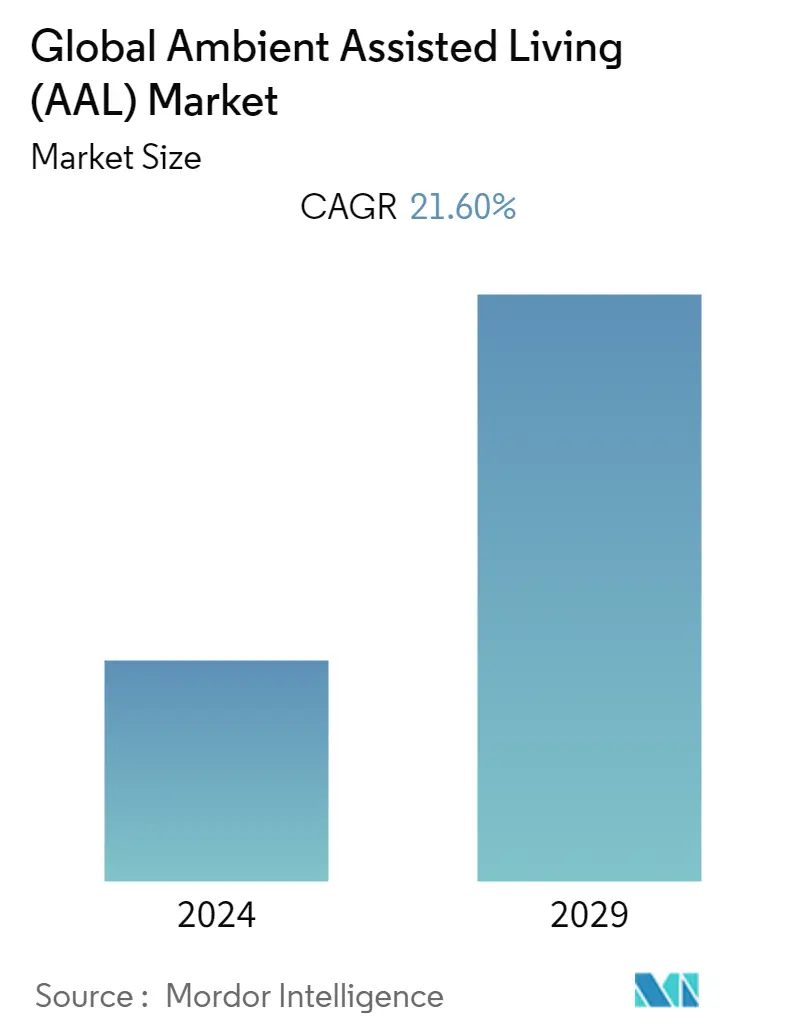Market Size of Global Ambient Assisted Living (AAL) Industry

| Study Period | 2019 - 2029 |
| Base Year For Estimation | 2023 |
| CAGR | 21.60 % |
| Fastest Growing Market | Asia-Pacific |
| Largest Market | North America |
| Market Concentration | Medium |
Major Players_Market_-_Key_Players.webp)
*Disclaimer: Major Players sorted in no particular order |
Need a report that reflects how COVID-19 has impacted this market and its growth?
Ambient Assisted Living Market Analysis
Over the next five years, the global ambient assisted market is expected to register a CAGR of 21.6%. The ambient assisted living (AAL) market is a new trend combined with smart homes. It is a system that offers assistance and support to the elderly population. The ambient assisted living systems are designed to assist older and differently abled populations with independent living. With the increase in age, the risk to health also increases, so there is a need for continuous monitoring and medical assistance for older people.
- According to the United Nations, globally, the number of people over 80 is projected to increase more than threefold between 2017 and 2050, rising from 137 million to 425 million. Additionally, the global population is aging faster, and the numbers are higher in certain regions and countries. For instance, North America and Europe are the two regions of the world with the highest proportion of elderly people in relation to their total populations, according to the UN. Such a rise in population aging will drive the market.
- According to the report of the US Center for Disease Control and Prevention, the overall life expectancy at birth is steadily increasing, with a target of 74.4 years by 2022, up from 73.3 years in 2017. Most of the increase is due to lower infant mortality. According to the same survey, life expectancy in the United States has dropped for the third year in a row to 78.6 years. People are striving toward a healthy lifestyle to keep them fit and monitor their eating habits; such changes in people's behavior will increase the demand for ambient assisted living solutions.
- Also, with the rise of the Internet of Things (IoT) and more people using the internet, AAL solutions and services like telehealth, telecare, telemedicine, telecoaching, and mHealth are becoming more popular. Also, more and more doctors are using digital health tools in their practices because they are more efficient and safer.
- AAL services used to be more expensive than they are now because many of them required manual labor and required either the patient or the doctor to travel, such as monitoring, collecting data and samples, diagnosing, and checking ups.The costs associated with such care have decreased with the latest technological innovations.
- Telemedicine is a part of AAL, but older people were less likely to use it because they liked getting care in person more. But the recent spread of technology and the COVID-19 outbreak made people more likely to use telemedicine solutions. For example, a study by American Well found that over 52% of Americans over the age of 65 were willing to use telehealth. The top reasons given were faster service, saving time, being more convenient, saving money, and having better access to healthcare professionals.
